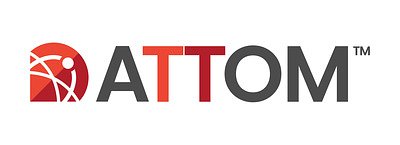
Foreclosure Rise Slow, Steady: Market Normalizes After Pandemic Relief
After a historic pause, foreclosures are ticking upward, but experts say a crisis is unlikely. Equity cushions homeowners, and regional disparities define the trend.
Foreclosure Rise Slow, Steady: Market Normalizes After Pandemic Relief
By Kathleen Cook
As the final vestiges of pandemic-era mortgage forbearance fade, foreclosure activity is steadily increasing across the U.S. However, experts caution against interpreting this uptick as a signal of a looming housing crisis. While foreclosure filings are rising, the pace remains significantly below historical averages, and a robust combination of homeowner equity, a strong job market, and regional variations are mitigating broader risks.
According to a recent report from ATTOM, October saw a continuation of the gradual rise in foreclosure activity, but the numbers remain well below pre-pandemic levels. While filings are up year-over-year, they are still approximately 48% lower than in October 2019. This nuanced picture suggests a market normalizing after an unprecedented period of intervention, rather than a sudden collapse.
A Gradual Return to Normalcy
The surge in foreclosure filings was largely anticipated as the temporary protections offered through the Coronavirus Aid, Relief, and Economic Security (CARES) Act and subsequent programs expired. Millions of homeowners utilized forbearance plans, delaying mortgage payments and avoiding foreclosure during the height of the pandemic. “The primary driver of this increase is simply the unwinding of those programs,” explains one industry analyst. “We knew this was coming, and the market has been preparing for it.”
However, the anticipated wave hasn’t materialized. Several factors are buffering the impact. Most significantly, homeowner equity has soared to record highs. “Homeowners have a substantial amount of equity in their homes, which provides a significant safety net,” says another analyst. “Many have the option to sell their homes and pay off their mortgages before foreclosure becomes a reality.” CoreLogic data confirms this, showing homeowner equity exceeding $30 trillion nationwide.
Regional Disparities Define the Trend
While the national picture suggests a measured increase, significant regional variations are emerging. States with more restrictive foreclosure processes, such as Florida and California, are experiencing slower rates of foreclosure filings. Conversely, states with more streamlined processes are seeing a faster increase.
Florida, for example, traditionally has a longer and more complex foreclosure process, often involving judicial review. This provides homeowners with more time to negotiate with lenders or explore alternative solutions. “The foreclosure process in Florida is notoriously slow,” explains a Florida-based housing expert. “This can provide some protection for homeowners, but it also creates challenges for lenders.”
The Tampa Bay area specifically experienced some data anomalies due to administrative catch-ups, with Hillsborough County seeing a disproportionate increase in filings as the county worked through a backlog of cases. “The numbers in Hillsborough County were inflated somewhat by a clearing of administrative issues,” notes a local source. “It’s important to look beyond the headline numbers and understand the underlying factors.”
The Equity Cushion & Strong Labor Market
The surge in equity is not the sole protective factor. A strong labor market is also playing a crucial role. Unemployment rates remain low, providing homeowners with the income needed to meet their mortgage obligations. “The strong job market is a key factor in preventing a widespread foreclosure crisis,” says one economist. “People who have jobs are more likely to be able to stay current on their mortgage payments.”
However, experts caution that economic headwinds could change the situation. A potential recession or a significant rise in unemployment could put more homeowners at risk of foreclosure. “While the current situation is relatively stable, it’s important to monitor economic conditions closely,” warns an industry analyst. “A downturn could quickly change the picture.”
Comparing to Previous Crises
This current situation differs dramatically from the 2008 financial crisis. In 2008, foreclosures were driven by predatory lending practices, subprime mortgages, and a lack of equity. Today, homeowners generally have more equity, and lending standards are much tighter.
“The biggest difference is the quality of the mortgages,” explains a mortgage industry veteran. “In 2008, many homeowners were underwater on their mortgages and had little incentive to stay current. Today, most homeowners have a significant equity stake in their homes.”
Looking Ahead
The consensus among industry experts is that foreclosure activity will continue to rise gradually in the coming months, but a full-blown crisis is unlikely. The key factors to watch will be economic conditions, unemployment rates, and the effectiveness of loss mitigation programs.
“We expect foreclosure activity to continue to normalize, but it’s unlikely to reach the levels seen during the 2008 crisis,” says one analyst. “The market is much more resilient today.”
Black Knight’s Mortgage Monitor reports echo this sentiment, noting that while foreclosure starts are trending upward, overall delinquency rates remain relatively low. CoreLogic data further supports this view, showing that serious delinquencies are declining.
While the situation remains largely stable, potential homebuyers and investors should remain cautious and do their due diligence. Understanding regional variations and monitoring economic conditions will be crucial for navigating the evolving housing market. The current environment requires a nuanced approach, recognizing the complexities and the mitigating factors that are shaping the future of housing.
Ultimately, the current increase in foreclosure activity represents a return to normalcy after an unprecedented period of intervention, rather than a signal of a looming crisis. The combination of homeowner equity, a strong job market, and responsible lending practices is providing a crucial buffer against widespread foreclosures.
📝 This article is still being updated
Are you a relevant expert who could contribute your opinion or insights to this article? We'd love to hear from you. We will give you full credit for your contribution.
Contribute Your Expertise →